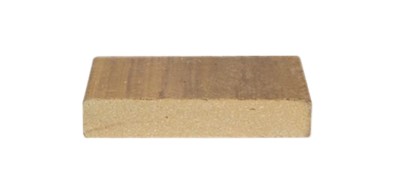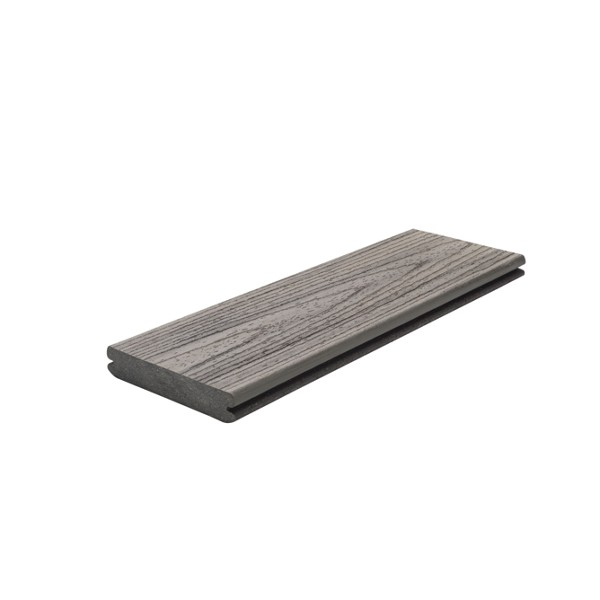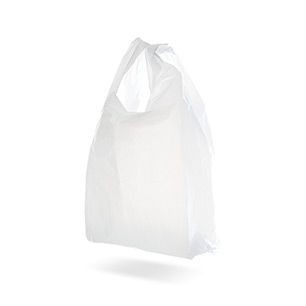What is Plastic Decking?
PVC decking, also known as plastic decking, is made from 50% virgin polymers. Plastic decking is often confused with composite decking, which contains various percentages of plastic film, but they are drastically different products.
PVC decking is scratch-, stain- and insect-resistant. Most current generation products hold their colour well and don't require painting or staining. It’s also sold in a variety of colours, textures and profiles. PVC decking is often priced at a premium over competitive wood-plastic composites, like Trex(R). PVC has also been known to discolour when used with rubber or PVC products, such as a welcome mat.
Comparing Composites and PVC
Outside of wood, two of the most popular choices for building a deck are plastic, or PVC decking, and composite decking. Both are made with plastic or plastic film, but they are not the same thing. There are important differences to note between the two.
Composite decking – such as Trex – is a blend of recycled plastic film and reclaimed wood fibers. The plastic film that goes into composite decking is called low-density polyethylene and combines with wood fibre – or wood flour – to create the board’s resilient core. The combination of reclaimed raw materials and a unique manufacturing process makes Trex one of the most sustainable and long-lasting decking materials.
When comparing composites and PVC, the main difference is appearance. Composites often better resemble wood with natural-looking grain patterns and more realistic colours. By contrast, PVC has a more synthetic appearance. Both offer multi-tonal or “streaked” products that are designed to mimic real wood.
Installation processes are nearly identical. Both can be installed with standard tools and can be installed with hidden fasteners, reducing the unsightly screw holes that come with wood installations.
Types of Plastic Decking
Two of the most popular choices for building a deck are plastic decking and composite decking. But not all decking material is created equal. There are some important differences between the two:

Composite
Composite decking – like Trex – is a blend of plastic film and wood fibres. The plastic film that goes into composite decking can include polypropylene or polyethylene. These plastics work well with wood fibres to create a strong, resilient material that is more stable than 100% plastic decking.

Plastic
PVC decking is made completely from synthetic materials. PVC consists of polyvinyl chloride, a type of vinyl typically used for outdoor siding and fencing.

Composite
PVC-wrapped composite decking is a plastic-coated board comprised of a composite core wrapped with a vinyl shell.
PVC Decking

PVC decking is resistant to moisture and rot because synthetic fibres are not absorbent. However, it can expand with heat and contract with cold. This can cause it to crack and make your deck potentially unstable.
Some PVC decking materials can fade or peel as a result of exposure to the elements.
Composite Decking
Composite decking does not splinter or crack and does not become as slippery as solid plastic in winter months.
Trex composite decking products are infused with stain-resistant, fade-resistant colour throughout the entire board to minimise the look of any surface scratches, giving uniform colour all the way through.
Is PVC and Composite Decking Recyclable?
PVC is recyclable but is initially manufactured from mostly virgin materials. Not all composite decking is made from recycled material. Trex, however, is sustainably made from 95% recycled materials, including reclaimed wood fibers and plastic film. In fact, Trex saved 1 billion pounds of plastic film and wood scrap from the landfill in 2021 Trex boards can be repurposed after use but not recycled.

Trex composite decking is made from 95% recycled plastic film and reclaimed sawdust.

Trex kept more than 1 billion pounds of plastic film and reclaimed wood from the landfill in 2021
As one of the largest plastic film recyclers in the USA, our eco-friendly approach contributes to a healthier environment.
Composite decking vs wood
Composite decking has a clear advantage over wood:
Lifespan
Weathers All Weather
Resists The Elements
Low-Maintenance
Differences Between PVC & Composite Decking
Cost of Composite vs PVC Deck Boards
PVC and composite decking are available in a variety of price points for every budget. The initial cost of a PVC board and composite board varies according to length, profile, material and performance capability. Board costs can also be affected by market location.
Be careful when comparing boards. You can’t compare a premium PVC board with an entry-level composite board. Premium composite boards, for example, will be more expensive than a lower priced PVC board. It’s important to compare boards of similar quality and price range.
Generally, PVC decking is more expensive than composite decking. The average price of PVC decking ranges between $10 and $15 per square foot; composite between $4.50 and $13 per square foot.
Fastener, tool and installation costs should be relatively similar. Labor costs will vary and can be affected by the location.